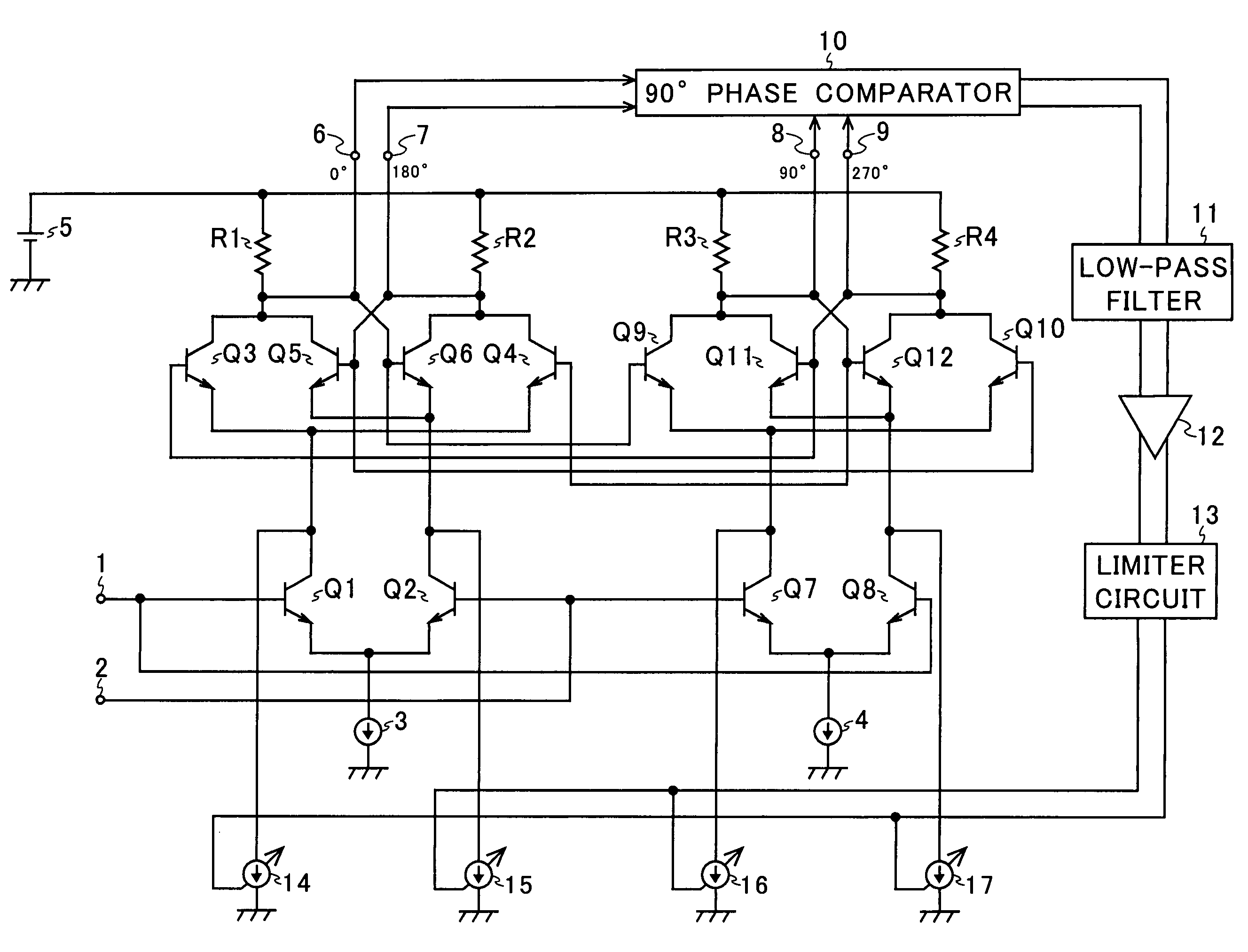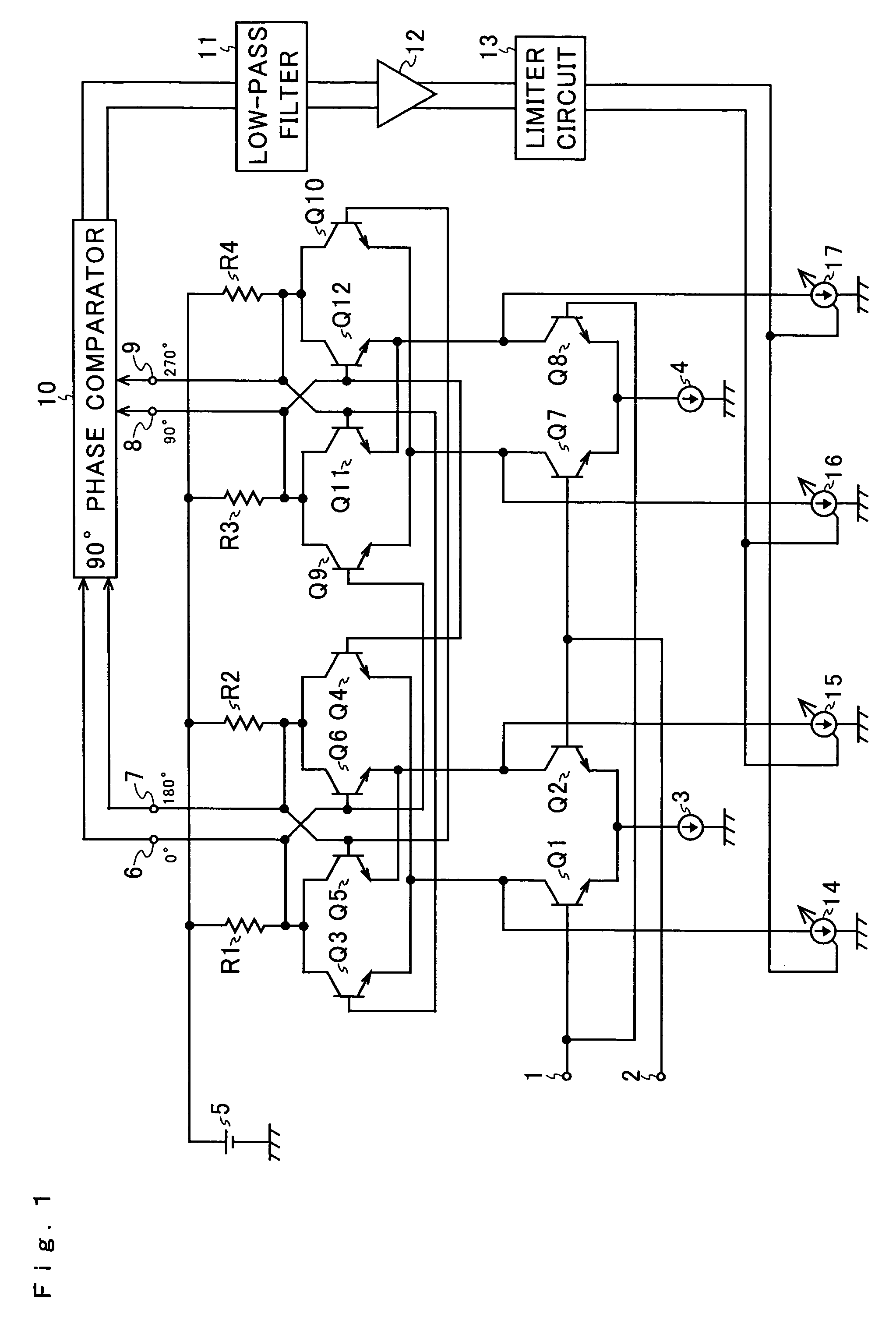90-degree phase shifter
a phase shifter and 90 degree technology, applied in pulse manipulation, pulse modulation carrier system, pulse technique, etc., can solve the problems of deviating from 90 degree, affecting the way it is fed back, and not always yielding output signals with a phase difference of exactly 90 degr
- Summary
- Abstract
- Description
- Claims
- Application Information
AI Technical Summary
Benefits of technology
Problems solved by technology
Method used
Image
Examples
Embodiment Construction
[0037]Hereinafter, an embodiment of the present invention will be described with reference to the accompanying drawings. An example of the configuration of a 90-degree phase shifter according to the invention is shown in FIG. 1. In FIG. 1, such circuit elements as find their counterparts in FIG. 6 are identified with common reference numerals or symbols.
[0038]As compared with the conventional 90-degree phase shifter shown in FIG. 3, the 90-degree phase shifter according to the invention shown in FIG. 1 is additionally provided with a 90-degree phase comparator 10, a low-pass filter 11, a DC amplifier 12, a limiter circuit 13, and variable current sources 14 to 17.
[0039]NPN-type transistors Q1 to Q12, input terminals 1 and 2, constant current sources 3 and 4, resistors R1 to R4, a constant voltage source 5, and output terminals 6 to 9 together constitute a T flip-flop that functions as a ½ frequency divider. The input terminal 1 is connected to the base of the input transistor Q1 and...
PUM
 Login to View More
Login to View More Abstract
Description
Claims
Application Information
 Login to View More
Login to View More - R&D
- Intellectual Property
- Life Sciences
- Materials
- Tech Scout
- Unparalleled Data Quality
- Higher Quality Content
- 60% Fewer Hallucinations
Browse by: Latest US Patents, China's latest patents, Technical Efficacy Thesaurus, Application Domain, Technology Topic, Popular Technical Reports.
© 2025 PatSnap. All rights reserved.Legal|Privacy policy|Modern Slavery Act Transparency Statement|Sitemap|About US| Contact US: help@patsnap.com



